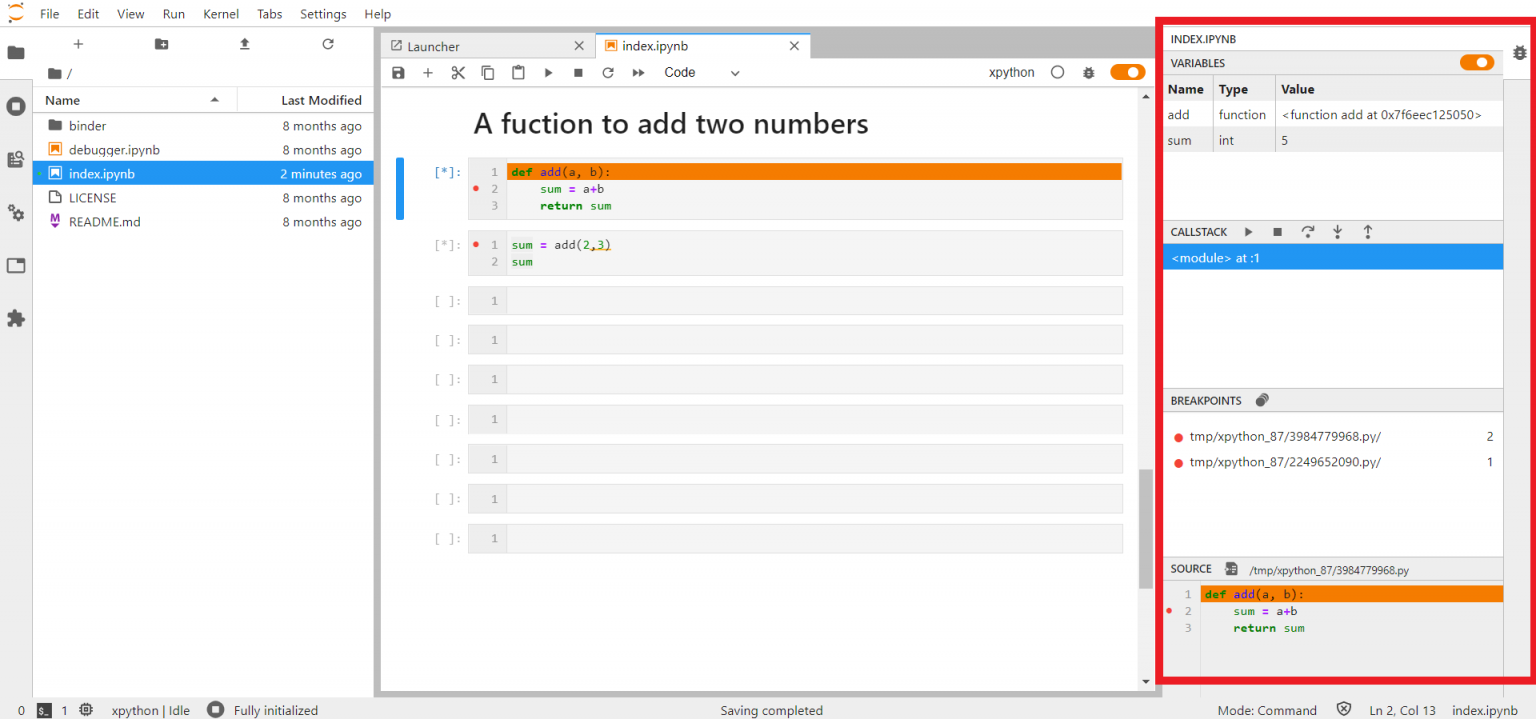

When you look at logs you don’t see the change over time immediately (think learning curve vs losses on epoch 10), You cannot look at your console logs all the time, Monitoring machine learning experiment runs is an important and healthy practice but it can be a challenge.
Jupyterlab install#
There are a ton of JupyterLab extensions that you may want to use.Įxtension Manager (little puzzle icon in the command palette) lets you install and disable extensions directly from JupyterLab.
Jupyterlab how to#
If you would like to see how to create your own extension read this guide. Technically JupyterLab extension is a JavaScript package that can add all sorts of interactive features to the JupyterLab interface. JupyterLab extension is simply a plug-and-play add-on that makes more of the things you need possible. “JupyterLab is designed as an extensible environment”. In this article, we’ll talk about JupyterLab extensions that can make your machine learning workflows better. One of the great things about Jupyter ecosystem is that if there is something you are missing, there is either an open-source extension for that or you can create it yourself. You can also simply use jupyter lab as the command, but I like to have access to all of the files in directory.JupyterLab, a flagship project from Jupyter, is one of the most popular and impactful open-source projects in Data Science. Jupyter lab -ContentsManager.allow_hidden=True You’re ready to open up a Jupyter notebook, simply type in the following command:

Now, let’s install Pandas, NumPy and Matplotlib using the following commands: Right, dependencies, what are they? Well, basically the tools you’ll be using for your project I’ll focus on Pandas and NumPy here, but keep in mind there are a lot of dependencies and libraries for many different things. There are a couple different ways to install your dependencies, I’ll be covering one. To see your envs you can use the conda env list command. That means you’re now in your project env.

Notice here how it now says (project2) instead of (base). Links : And well, the links will look like this hint: they have underlines.Docs: Will come with a link to the docs.Brief Descriptions: Self explanatory, don’t think too hard about it.
Jupyterlab code#
My aim with this and following posts is to set up a blog series with little text, and plenty of code to get you started. Although, I agree, I still think setting these things up should be quite easy and straightforward, once that is established, spend the rest of the time on the docs, believe me! Note: If you’re a seasoned Data Scientist, I know what you’re thinking, “just look at the docs”.


 0 kommentar(er)
0 kommentar(er)
